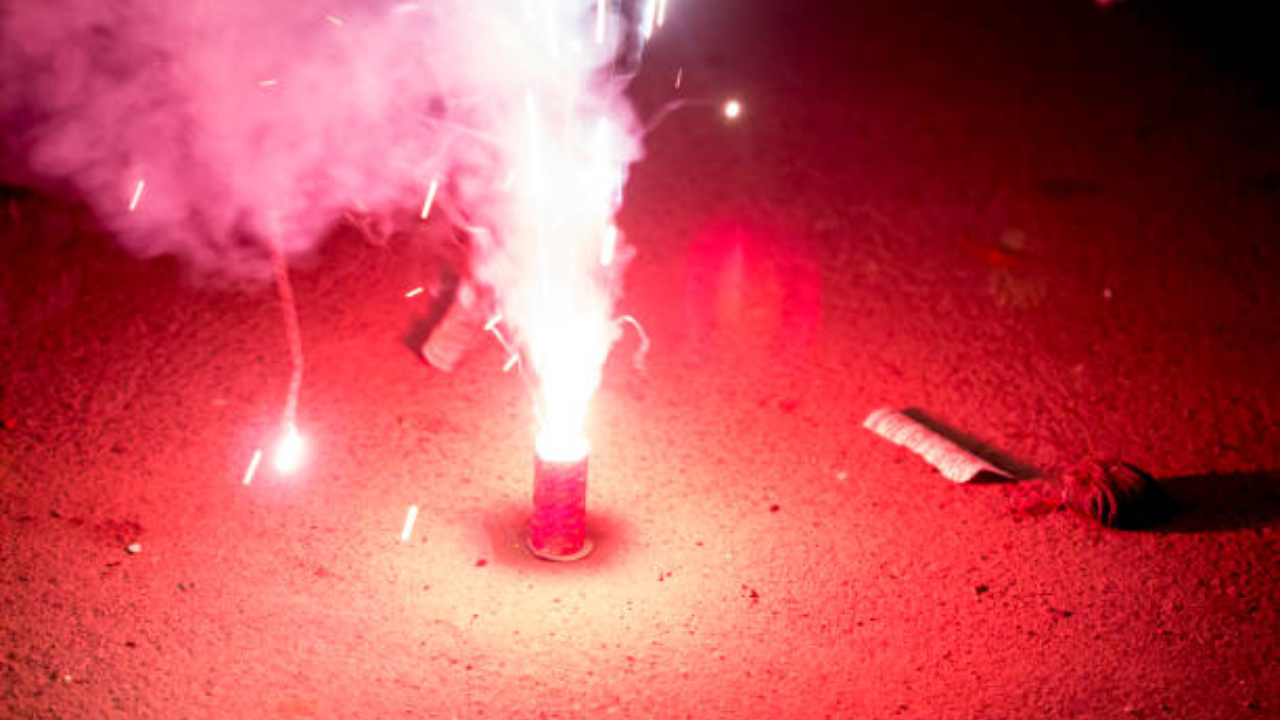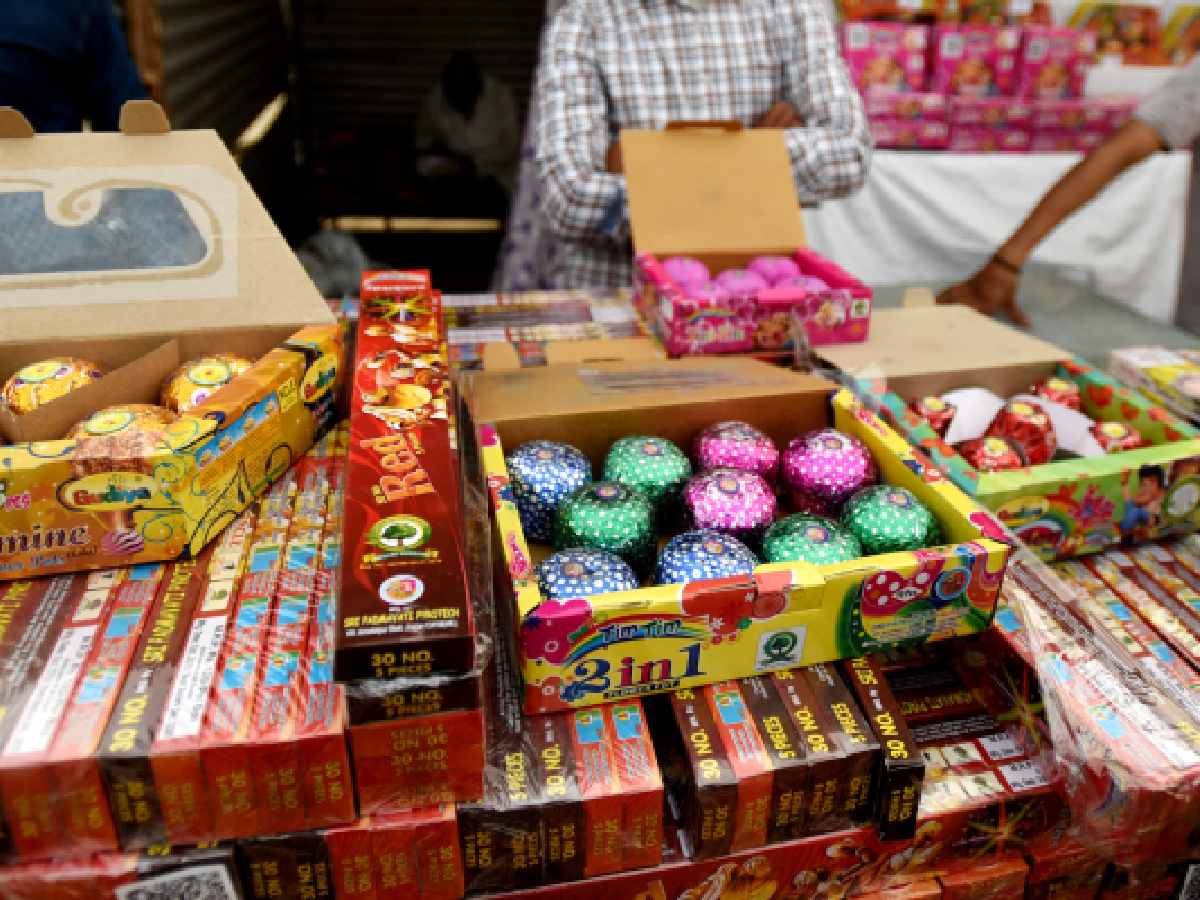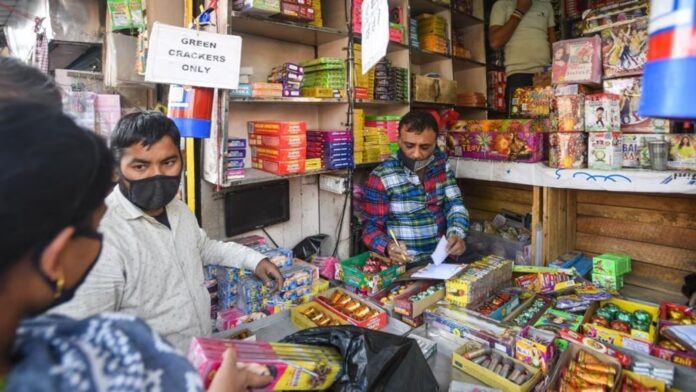The Supreme Court recently took strong action regarding pollution in Delhi, focusing on the ineffective implementation of a firecracker ban and the escalating air quality crisis. Responding to reports of hazardous air conditions following Diwali, the Court directed the Delhi Police Commissioner and the Aam Aadmi Party (AAP)-led Delhi government to submit detailed affidavits within one week. These affidavits must outline this year’s actions to enforce the firecracker ban and propose measures to ensure stricter compliance in the coming years.
On the morning of November 1, Delhi was labelled the world’s most polluted city. According to data cited by Reuters, PM2.5 levels in several areas of Delhi surpassed the “severe” threshold, endangering respiratory health and putting citizens at risk. The Supreme Court, alarmed by the unprecedented pollution levels, noted that this year’s post-Diwali pollution was significantly worse than in the last two years. Justice Abhay Oka and Justice Augustine George Masih, presiding over the bench, emphasized the need for transparency and accountability, mandating the Delhi Police to file a comprehensive affidavit detailing their enforcement of the firecracker ban.
Apart from addressing the firecracker ban, the Court also considered stubble burning a significant pollution contributor in Delhi and surrounding areas during this time of year. Rising cases of stubble burning in neighbouring states, particularly in Punjab and Haryana, have been linked to worsening air quality around Diwali. In response, the Court ordered the Punjab and Haryana governments to provide affidavits documenting stubble-burning cases reported during the last ten days of October. This directive aimed to gain insights into the issue’s scale and assess the impact of stubble burning on Delhi’s air quality. Additionally, the Delhi government was asked to report if any instances of farm fires were detected within its jurisdiction during this period.

The bench also highlighted other significant sources of pollution that contribute to Delhi’s deteriorating air quality. These include transportation emissions, the movement of heavy trucks, and industrial pollution. Justice Oka and Justice Masih emphasized that the upcoming hearing, scheduled for November 14, would comprehensively review these pollution sources to develop a holistic approach to reducing air pollution in Delhi.
In parallel with the Supreme Court’s actions, data from the Central Pollution Control Board (CPCB) has shown a rapid decline in air quality across the city. On Monday, several monitoring stations recorded AQI levels exceeding 400, marking “severe” air quality conditions. Areas such as Anand Vihar, Wazirpur, Jahangirpuri, Rohini, and Punjabi Bagh reported AQI levels between 404 and 433, indicative of highly unhealthy air that poses severe risks to vulnerable populations, including children, the elderly, and those with pre-existing health conditions.

These figures were a sharp escalation from the previous day’s AQI, which, while lower, already signalled hazardous air. Sunday had recorded the season’s worst AQI level at 382, an increase from 316 on Saturday, underscoring the urgency for stricter pollution control measures.
The Supreme Court’s intervention reflects a broader concern about air pollution in Delhi, especially during the winter when weather patterns trap pollutants closer to the ground, causing smog and lowering visibility. The Court’s insistence on affidavits from the Delhi government, Delhi Police, and the governments of Punjab and Haryana demonstrates its commitment to holding these authorities accountable for the effective enforcement of anti-pollution measures. By requesting concrete action plans for the future, the Court aims to address not only immediate issues but also to establish a foundation for longer-term pollution control.
Delhi’s pollution crisis is a multi-faceted problem requiring coordinated efforts from various stakeholders, including state governments, local enforcement agencies, and citizens. Stubble burning remains a contentious issue, as farmers in neighbouring states often resort to burning crop residues due to the lack of affordable and sustainable disposal alternatives. Despite government subsidies and the promotion of eco-friendly machinery, stubble burning remains prevalent. The Court’s demand for accountability from Punjab and Haryana highlights the importance of state-level initiatives and collaboration in tackling transboundary pollution.

Transport emissions, heavy-duty vehicles entering the city, and industrial pollutants further exacerbate Delhi’s air quality issues. The Court’s acknowledgement of these sources indicates an awareness of the comprehensive strategy needed to tackle Delhi’s pollution crisis. Stricter regulations on industrial emissions, better traffic management to control vehicle pollution, and incentives to reduce reliance on polluting transportation methods are some potential measures that could contribute to cleaner air in Delhi.
The Supreme Court’s next hearing on November 14 is expected to be pivotal. By then, the Court aims to gather adequate information from the affidavits submitted by Delhi authorities and neighbouring state governments. This data will inform the Court’s recommendations and potentially lead to stricter enforcement strategies, new regulations, or even innovative pollution control initiatives tailored to Delhi’s specific needs. The Supreme Court’s proactive approach underscores the pressing need for immediate and sustained action to mitigate air pollution in the nation’s capital, ensuring a safer and healthier environment for its residents.
Will Delhi Police Take Accountability?
This event also raises serious questions about the supply and sale of firecrackers in Delhi. How did firecrackers enter the national capital when they were strictly banned? How did the sales and purchases go unnoticed by the Delhi Police amidst the ban? Did Delhi Police intentionally allow the selling of firecrackers because the AAP imposed the ban and not the Modi government? Construction of a small house in Delhi is impossible without giving a bribe to the Delhi Police, so what commission amount was given to Delhi Police that they turned a blind eye towards these sales? Delhi Police must answer these questions because they are accountable for the rising post-Diwali pollution in the national capital.

